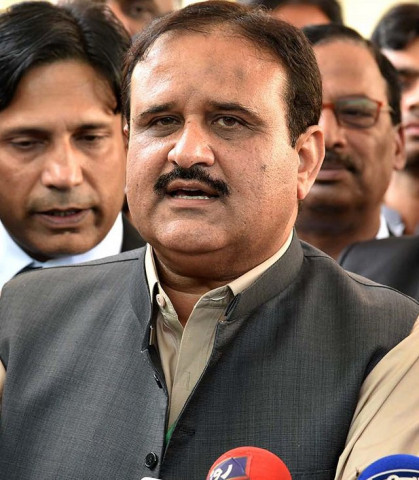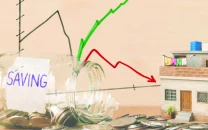Punjab aims to achieve 7% economic growth by 2023
Reveals five-year strategy to boost economy of the province

PHOTO: FILE
The five-year plan is aimed at developing a people-centric growth strategy and addressing fundamental and structural imbalances in Punjab. Economic managers of the province want to move towards sustainable and regionally equitable economic growth.
The strategy simultaneously points out the fragile national macroeconomic situation, mounting fiscal and external deficits, rapid currency depreciation along with rising capital costs as the biggest challenges while implementing the policy.
Punjab’s population currently stands at 110 million, equivalent to 52.95% of the country’s populace. With average annual gross domestic product (GDP) growth of 4.9% over the last five years, Punjab has 54.2% share in the national economy. Its economic structure comprises 62.4% of services, 20% of agriculture and 17.6% of manufacturing, with a higher share in private and public investments and in net factor income from abroad.
Keeping in view the past experiences and future challenges, the strategy has identified five main pillars of growth in Punjab.
Firstly, it emphasises enhancing focus on sectors in which Punjab has comparative advantage in the national context and harnessing their potential. As per details, the province has advantage in 11 out of 18 national sub-sectors. The top four sectors include major crops, small-scale manufacturing, cotton ginning and livestock.
It also requires average growth of 14% per annum in agricultural credit over a period of five years.
The strategy finds that doubling the small and medium enterprise (SME) credit will almost double SME employment in Punjab. Thus, it requires average annual growth of at least 11% in SME credit over the five-year period as the province hosts almost 68% of SMEs in the national economy.
The second pillar focuses on creating an enabling environment for private sector-led investment and growth by facilitating businesses, investments and by reducing business-related costs and burdens. The strategy envisages average growth of 16% per annum in private investment in Punjab.
It also identifies key sectors for public-private partnerships (PPP) and shows a strong commitment by setting itself the task of increasing PPP to 10% of the provincial Annual Development Plan (ADP) by 2023. The third pillar covers formation of quality human capital and its utilisation. The strategy builds on the previous achievements made by the skills sector in training two million youth by enhancing this target to 2.5 million for the next five years.
The fourth pillar includes making public investment and setting ADP sectorial priorities so as to maximise the impact on growth. The strategy identifies the growth impact of capital investments made by the government in a number of sectors. Finally, the strategy advocates coordinating with the federal government on managing key macroeconomic policy variables that have a significant impact on Punjab’s economy. For example, the federal PSDP on water, crop procurement and support prices, and subsidies on agriculture inputs have significant growth consequences in the agriculture sector of Punjab.
The provincial government aims to achieve annual growth of 7% by 2023 through these strategies. The government also plans to reduce the ratio of idle youth in Punjab from 10.3% in 2017-18 to 8.8%. The success of the policy is conditional as the provincial government needs to launch vigorous efforts to raise its own resources.
The Punjab Growth Strategy is based on the assumption that Punjab’s share in National Finance Commission (NFC) transfers will at least remain unchanged. The 9th NFC has recently been constituted and the strategy strongly argues that Punjab’s share should not fall below the current level of 48.6% among provinces.
Published in The Express Tribune, March 12th, 2019.
Like Business on Facebook, follow @TribuneBiz on Twitter to stay informed and join in the conversation.


















COMMENTS
Comments are moderated and generally will be posted if they are on-topic and not abusive.
For more information, please see our Comments FAQ